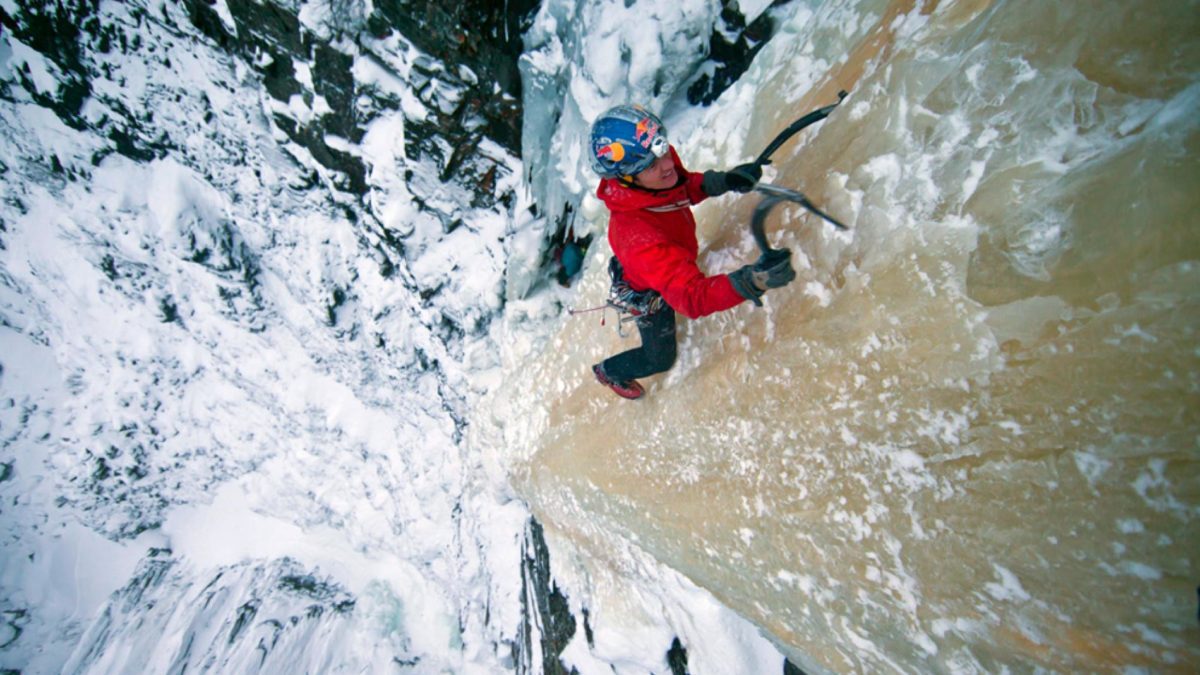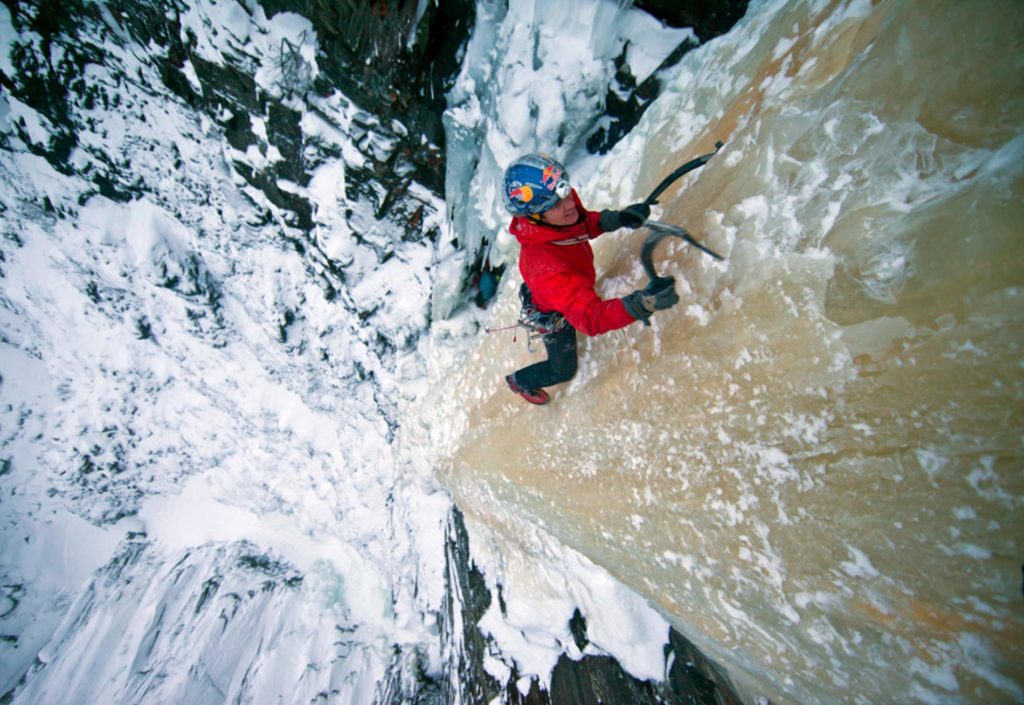15 Takeaways from Ice Climbing in Norway

In 2005, Will Gadd returned from Norway after establishing two big winter mixed routes. He penned his thoughts about the trip on the flight home to Canada.

Gadd is one of the world’s top ice and mixed climbers. He and Sarah Hueniken recently made the first Canadian ascents of the Christmas Tree ice route in China. He also started an ice climbing app, see here for more.
“I was motivated to write this on the flight home while thinking about the trip,” Gadd said.
“Some of it is redundant, but that’s the way of the world for me, I have to re-learn things regularly.” Gadd was one of the first ice climbers to ditch leashes and he explains why below.
Below are Gadd’s 15 takeaways from climbing in Norway.
1. The main difference between WI5 and WI6 water-ice is not the degree of steepness but the quality of the ice. A grade six pillar that’s seen a bunch of ascents can be a comfortable grade 5. The same route done fresh can be nightmare-inducing. For this reason all ice grades are basically meaningless. Describing the condition of the route means more than a number in the guidebook. A 60-metre pitch of fresh WI5 is worlds harder than doing 10 pitches of warm, well-climbed ice in Ouray or 20 in Hafner. Swing, swing, swing again, make it good. In 500 metres of ice you can easily swing 5,000 times.
2. Psychological damage is cumulative over the short term. After leading so many run-out sketchy pitches my mind is shot, as is my body. Maybe I’m getting old…
3. Technique matters. Without the techniques developed over the last seven years I could not have climbed these routes. The tireder my muscles felt the better I climbed.
4. Big ice routes are very alpine in nature, meaning they demand a large skill set and total focus to climb well. I’d never really thought about how much my partners and I understand and do automatically on routes until climbing with a partner, who, while rising to the challenge and doing a fantastic job, had not been through the Canadian Rockies school of climbing. There’s an art to keeping the momentum ball rolling uphill all day, but if you keep it rolling and both give 100 per cent effort then the momentum helps you roll over the obstacles. I did not understand how much I was asking of Andreas until I thought about what I was expecting–not everybody is used to slurping gels at belays and moving without stopping. He did a solid job while learning a lot in a short time and was a pleasure to climb with, a real first-rate fun partner.
5. Good headlamps (and a caving background) have really helped me feel comfortable climbing and moving in the dark. The Xenix IQ is amazing, the bright beam easily reaches 60M to the ends of the rap ropes and the LEDs allow it to last forever. Best new product of the year for sure.
6. I’m done with leashes for technical ice climbing. I can lead wet, scary WI6 in the dark, the Viper Fangs are good enough. The harder and weirder the ice is the more I prefer leashless tools. I put my leashes back on for one hard day and was lost, especially on ice where there are limited placements. The freedom to match and switch is worth it, you can move your body into the best position for the tool rather than either using awkward body position or having to make new placements–difficult to do when there aren’t any. I’ll still use leashes on big cruiser routes, they add security, but for any sort of technical climbing I’m staying leashless.
7. Each of these big routes looked horrendous from the road, and were horrendous to climb, but if you just keep chipping upward you’ll reach the top. The entire route is too much to think about, just go until something stops you.
8. Shortcuts are not. Clean your screws immediately, untie frozen knots, keep your gloves dry, replace your headlamp batteries, keep it FOCUSED.
9. Starting really early into unknown terrain is far better than descending late down the same. On the other hand, it’s better to have climbed a route than not…
10. Most packs are far too heavy. Carrying five pounds of pack is just crazy unless it’s filled with bricks or somehthing requiring heavy fabric. I’m going to work harder on packs.
11. Really light Gore-Tex is good for wetter ice climbing, Scholler is less good. I’ve been using Scholler on my legs and often my upper body in the Rockies, but here you want Goretex, there is a lot more water around and the additional humidity prevents Scholler from drying as fast it does in the Rockies. A typical sprint through a sprinkler that would dry in five minutes in the Rockies won’t here. I wore RHO fleece on my legs and LT tops, approached in this “underwear” outfit then put on the Gore Tex outers, good combination.
12. Temperatures of -5 to +5 with high humidity are actually a lot harder to stay warm and dry in than -20 to 0 with low humidity. Nothing dries, everything gets wet, systems are more important in “mild” temperatures than cold temperatures.
13. I’m done with vertical mono-points for hard ice climbing. They are a junk show for climbing really fresh ice. Ice on mixed routes often forms slowly and has good density, fresh ice is just too hollow for mono-points, Sabretooths work far better. I’m going evangelical on this, I just had my vertical monos rip too many times to ever want to use them again.
14. Vegetable ice is nasty, no matter what vegetable you’re dealing with. If it’s cauliflower, mushroom or onion skins it’s going to be engaging.
15. I still really, really like ice climbing, even after 20 years of it. Every year I learn something new, refine my systems and discover a facet of the ice jewels we’re privileged to climb. In Norway I saw ice in spectacular formations I’d never seen anything like before, and had the privilege of climbing them with a good partner.


